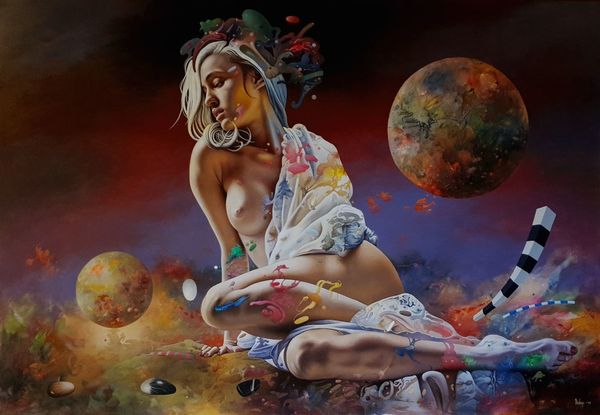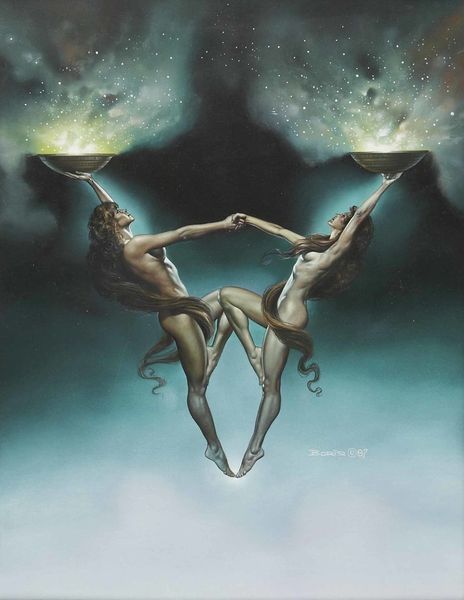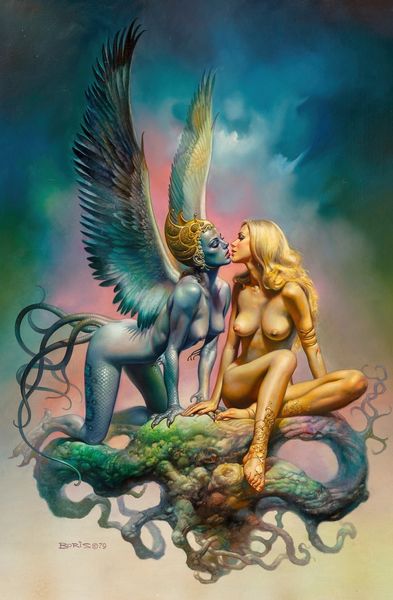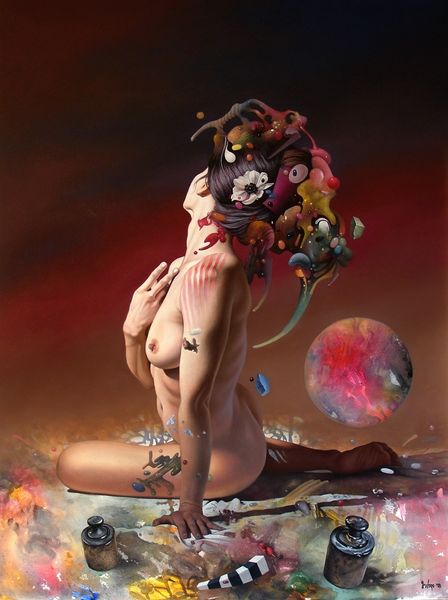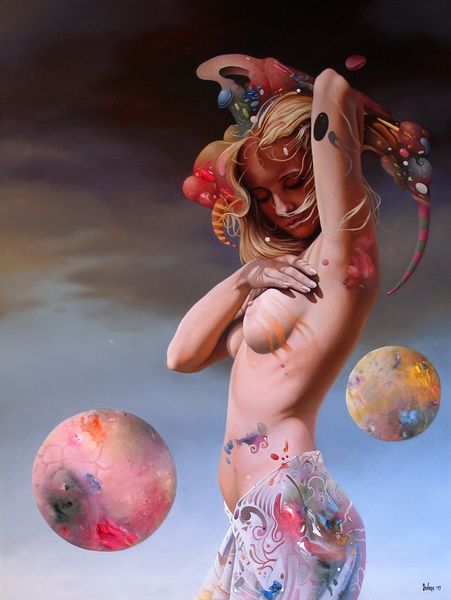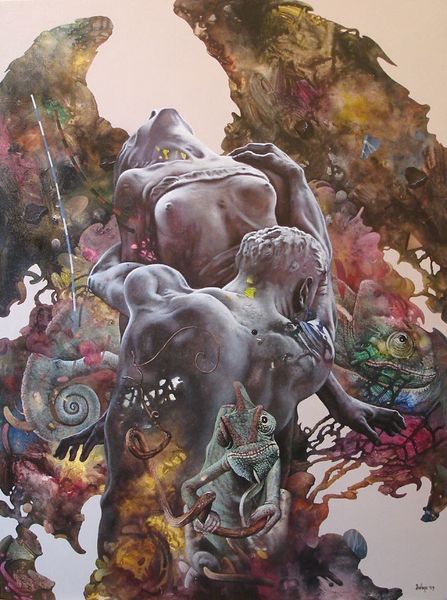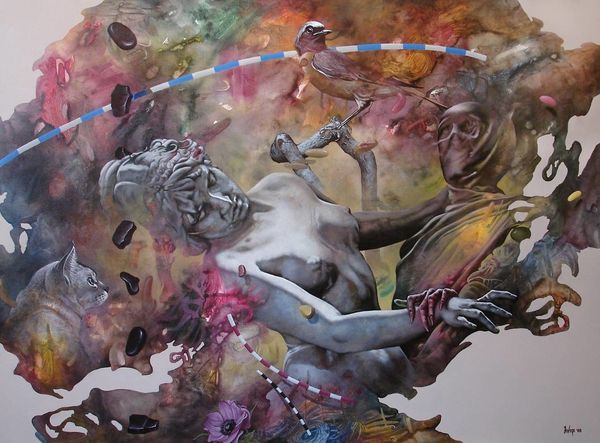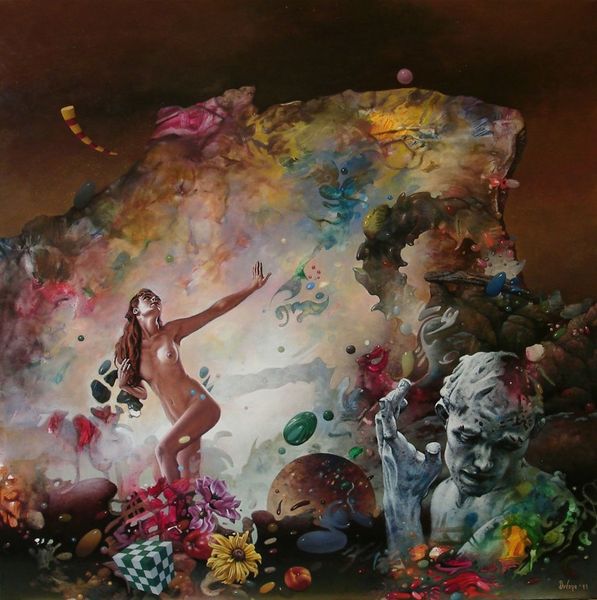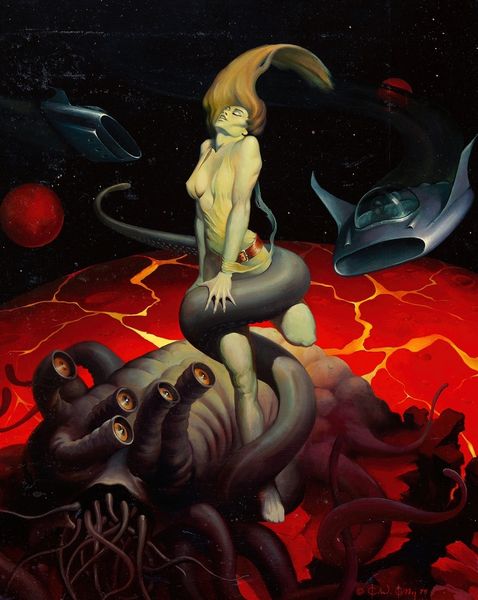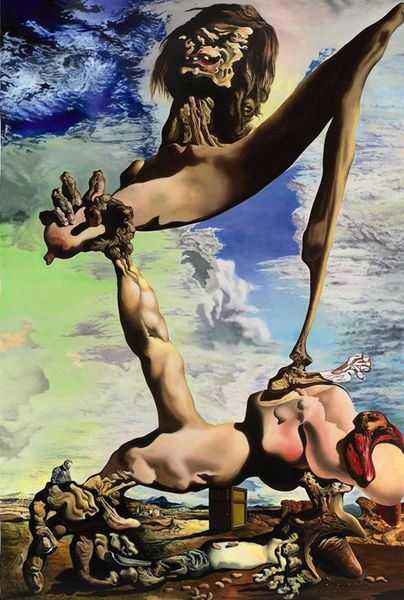
painting, acrylic-paint
#
contemporary
#
fantasy art
#
painting
#
fantasy-art
#
acrylic-paint
#
figuration
#
acrylic on canvas
#
genre-painting
#
nude
#
erotic-art
Copyright: Modern Artists: Artvee
Editor: Here we have Boris Vallejo's "Reaching for the Stars," an acrylic painting from 1978. The figures feel so grounded and yet they’re floating in this immense space. It's quite dreamlike. How would you interpret this work, considering the historical context? Curator: The 1970s saw a surge in fantasy art, often acting as an escape from social and political anxieties. The genre also experienced commercialization through pulp magazines and book covers, making art accessible outside traditional galleries. What statement do you think Vallejo makes by placing these idealized figures within this market and socio-political situation? Editor: Perhaps, by showing idealized, attractive nudes he’s directly trying to appeal to that popular magazine market? Curator: Exactly! And by overtly engaging in such erotic-fantasy, he normalizes the human form within technological progress; which seems rather provocative. What message does the artist convey, reflecting on the time? Is this depiction celebratory, or does it introduce a critical perspective on humanity's direction and relationship with technological progress? Editor: It does feel like a commentary. There's a vulnerability in their nudity amidst such a cold, vast setting. They seem to be searching, perhaps even questioning their place in that vast cosmos. Curator: It pushes us to analyze what fantasy imagery meant in the late 70s and what these nude images meant when representing human beings exploring technology. It raises a critical lens on the social, political and technological landscape of its time and the impact it had on culture. Editor: This painting is more than just skin deep! It's made me consider the interaction between the art world and wider societal anxieties. Curator: Indeed. And understanding that interplay unlocks a richer appreciation for works like this, showing how they shaped—and were shaped by—their era.
